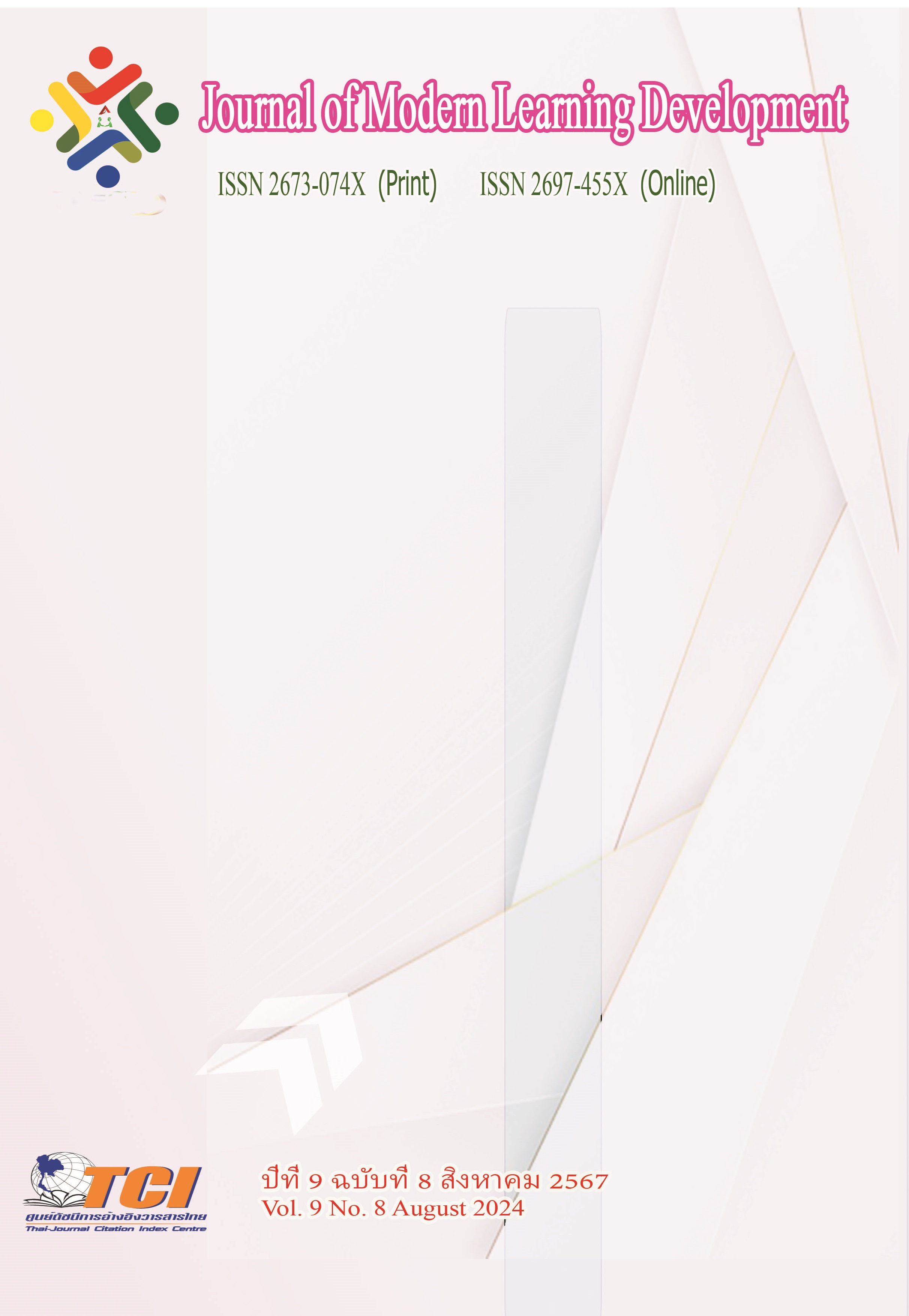Mechanisms for the development and creation of a network to enhance the excellent Buddhist vocational education management for learning in the New Normal
Main Article Content
Abstract
The objectives of this study were 1) to synthesize and extract lessons learned from the model Buddhist vocational colleges in the upper northern region; 2) to create a model for vocational learning and future skills for vocational colleges; 3) to develop an excellent Buddhist vocational education management model; 4) to create a network to enhance the excellent Buddhist vocational education management for learning in the New Normal; and 5) to create mechanisms for the development and enhancement of excellent Buddhist vocational education management for learning in the New Normal. It’s qualitative research, which studied information (Documentary Research) from secondary sources with action research, focusing on participatory action research from primary sources. The data was collected from the informants: monks, administrators, instructors, Buddhist vocational students, village sages, academics, vocational administrators and instructors, totaling 50 persons, asked about executives, faculty members, and parents, totaling 335 persons.
The findings of the study were as follows:
1. The process of synthesis and lessons learned of the prototype Buddhist Vocational College in the Upper Northern Region established in 4 stages: Stage 1: vision, philosophy, and identity; Stage 2: methods or person supervision; Stage 3: determination of development guidelines to enhance the quality of education; and Stage 4: integration of Buddhist principles in teaching and learning development.
2. Creating a learning management model for careers and future skills for vocational colleges, named ATNOE Model. There were 5 steps: 1) Analysis; needs of policies and methods for professional development 2) Teamwork; setting development goals and participatory development 3) Network; creating a social network to enhance knowledge exchange 4) Organization; plan management, curriculum, collaborative development, and 5) Evaluation; evaluate and implement good results to use in the organization.
3. The development of an excellent Buddhist vocational education management model for learning in the New Normal consisted of 4 components: 1) Curriculum, teachers, media, physical environment, and learners; 2) Buddhist vocational management towards goals and assessment of study results; 3) Teaching model of precepts, meditation, wisdom, and technology; and 4) The New Normal on the "Metaverse Platform" corresponded to the New Normal life environment to achieve study skills, life skills, work skills, and technology skills.
4. Creating a network to enhance the management of excellent Buddhist vocational education to enhance the education management in 5 issues, 1) namely physics, 2) teaching and learning, 3) behavior, 4) Buddhist-oriented promotion, and 5) Buddhist monk's daily activities.
5. Creation of mechanisms for the development and enhancement of excellent Buddhist vocational education management for learning in the New Normal could be accomplished in 5 steps: 1) Strategic setting and goals, 2) Strategic implementation, 3) Supervision and evaluation according to the plan Action, and 4) Guidelines for creating development mechanisms to associate the excellent Buddhist vocational development.
Article Details
References
เชวง อุปถัมภ์. (2557) แนวทางการพัฒนาคุณภาพของโรงเรียนวิถีพุทธ สังกัดสำนักงานเขตพื้นที่ การศึกษาประถมศึกษาตาก เขต 2. สักทอง: วารสารมนุษยศาสตร์และสังคมศาสตร์. 20 (2), 129-139.
ณัฐกิตติ์ ศรีสันต์. (2548). ปัญหาและแนวทางการพัฒนาการดำเนินงานโรงเรียนวิถีพุทธในภาคตะวันออก. วิทยานิพนธ์การศึกษามหาบัณฑิต. บัณฑิตวิทยาลัย: มหาวิทยาลัยบูรพา.
พระระพีพัฒน์ หาญโสภา. (2557). ประเมินโรงเรียนวิถีพุทธ สังกัดสำนักงานเขตพื้นที่การศึกษามัธยมศึกษา เขต 25. วิทยานิพนธ์ศึกษาศาสตรมหาบัณฑิต สาขาวิชาบริหารการศึกษา. คณะศึกษาศาสตร์. บัณฑิตวิทยาลัย: มหาวิทยาลัยขอนแก่น.
สมศักดิ์ เอี่ยมดี. (2556). การพัฒนาระบบการบริหารเครือข่ายการมีส่วนร่วมในการจัดการศึกษาของ สำนักงานเขตพื้นที่การศึกษาประถมศึกษา. วารสารศึกษาศาสตร์ มหาวิทยาลัยนเรศวร. 15 (ฉบับพิเศษ), 216-224.
สำนักงานคณะกรรมการการศึกษาแห่งชาติ. (2545). สภาพและปัญหาการบริหารการศึกษาและการจัดการศึกษาขั้นพื้นฐานของสถานศึกษาในประเทศไทย. กรุงเทพมหานคร : วี.ที.ชี,
สำนักงานสภาพัฒนาการเศรษฐกิจและสังคมแห่งชาติ. ยุทธศาสตร์ชาติ (พ.ศ. 2561 - 2580), ราชกิจจานุเบกษาเล่ม 135 ตอนที่ 82 ก.
อัมพร บำรุงผล. (2549). การบริหารโรงเรียนวิถีพุทธของสถานศึกษาขั้นพื้นฐาน สังกัดสำนักงานเขตพื้นที่การศึกษาชลบุรี เขต 3. วิทยานิพนธ์หลักสูตรครุศาสตรมหาบัณฑิต สาขาการบริหารการศึกษา คณะครุศาสตร์. บัณฑิตวิทยาลัย: มหาวิทยาลัยราชภัฏราชนครินทร์.


